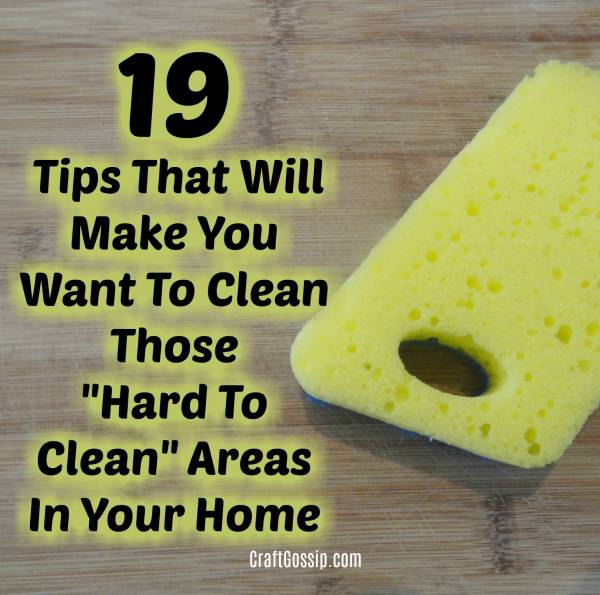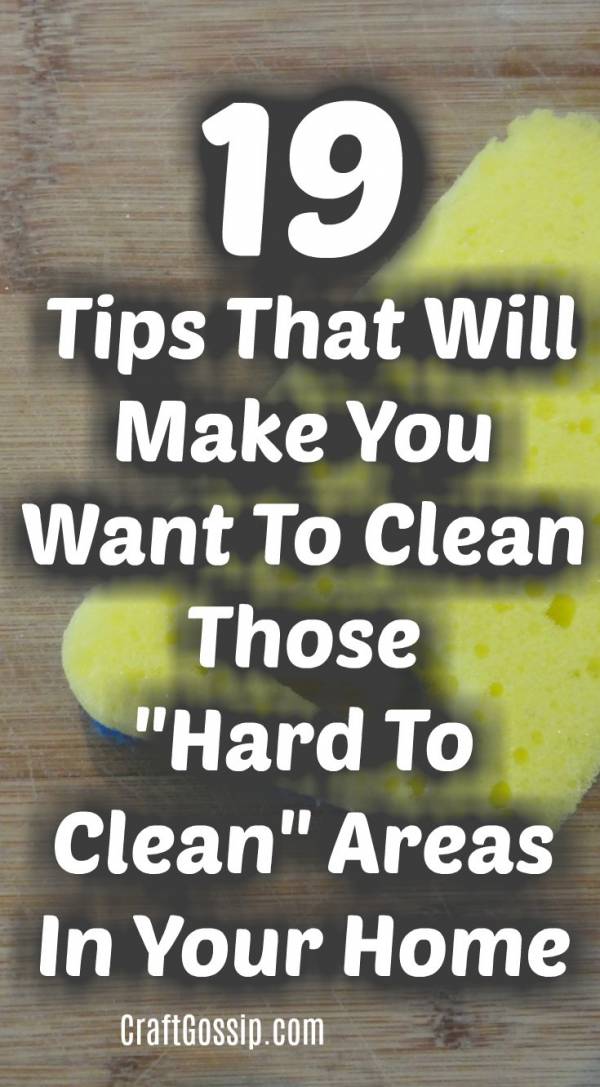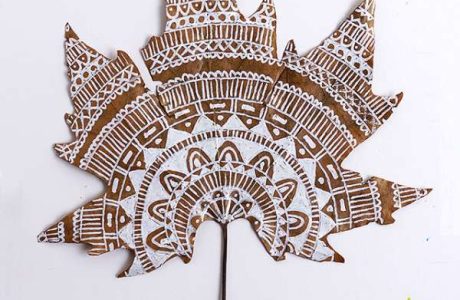
Keeping a tidy home is no easy task. In fact, the majority of the time it seems like more of a hassle than it seems to do any good. These 19 tips are great for those areas in your home that you are just dreading to tackle. You know what I’m talking about, the dirty couch, the oil-stained driveway, those dirty window seals. Take a look at this post and you’ll be cleaning those dreaded “problem areas” this weekend.
Read the post here: 19 Ways To Conquer The Hard To Clean Things In Your Home
1: Push a lint roller along the bottom of an empty purse to pick up dirt, loose change, and more.
2: Dog Hair on the carpets? Use a hairdressing rubber sweeping broom – The rubberized blade will quickly lift fur from rug fibers
3: Glassware looking shabby? Remove built-up film from hard-water minerals by soaking the glass in white vinegar for 5 minutes.
4: The dreaded room blinds, Dip a sock into a mixture of equal parts vinegar and water. Put it on your hand inside out and use it to clean the window blinds.
5: Clean jewellery with a DIY Jewelry cleaner
6: Throw a Lemon into your garbage disposal and chop it up, to clean, freshen and make your sink smell nice.
7: Use a coffee filter across dusty and staticky computer monitors and plasma TV screens to remove buildup
8: Use baby oil to remove fingerprints from stainless steel appliances.
9: Use toothpaste to remove pen marks from wooden bench tops
10: Clean limescale from your kettle by filling it with half white vinegar, half water and soaking overnight.
11: Make your own toilet cleaning blocks with bi carb
12: Remove watermarks and cup rings from a table with a hairdryer
13: Soak labels in eucalyptus oil to remove them from bottles and jars.
14: Remove sofa stains with shaving cream and elbow grease.
15: Coffee cups stained? Soak in water and bleach to lift the stains.
16: Easily clean the small nooks and crannies in your keyboard or other small electronics by placing the pointed lid of a squeezy ketchup bottle over the end of a vacuum
17: Use hand sanitizer and a cotton ear bud to clean your remote controls.
18: Place muslin bags of baking soda into the back of cupboards to soak u bad odours
19: Use toothpaste to clean leather car seats.
Do-It-Yourself cleaners are not the hard-to-make, expensive or ineffective options we used to know. While these options are not available in a wide range of fruit or flower fragrances, they will leave your house smelling fresh and clean.
Advantages to Making Your Own Cleaning Supplies
People may not want to take the time to make their own cleaners, fearing that household items may not disinfect or polish as well as a commercial brand. Another concern may be that buying large amounts of the basic ingredients would cost more than buying one container of an all-purpose cleaner.
By not including artificial fragrances or heavy perfumes, you are not only providing some relief to people with allergies, but you’re reducing the amount of hazardous chemicals that are released into the air and water.
Commercial Household Cleaners and VOCs
Many cleaning agents yield high levels of volatile organic compounds (VOCs), and terpenes that can react with ozone to form secondary pollutants including formaldehyde.
Ammonia, chlorine, formaldehyde, ketones, hydrocarbons, hydrochloric acid, phenols, phosphates, and trichloroethylene are all found in various forms in the average household cleanser.
Trichloroethylene, a chemical found in carpet cleaners, glass and floor polish, was found to cause fetal development disorders and birth defects.
According to the New Chemicals Program under the U.S. Environmental Protection Agency, only a small fraction of the more than 80,000 registered chemicals have been tested for human health concerns. All the more reason to make your own household cleaner, using items found in your pantry.
DIY Natural Powder Cleanser
Making an abrasive powder cleaner that would be used in the same way powder cleansers would be used to scrub out sinks, tubs and ovens doesn’t have to be toxic. The only two ingredients include Borax and baking soda, in equal measures.
Borax is also known as sodium borate and can be bought in most hardware stores, usually where cleaners and water softeners can be found. Borax is panned from evaporated bodies of water, and the resulting mineral is used as a water softener or detergent.
How To Make Eco-Friendly Scouring Cleanser
This scouring cleanser can be used in the same way abrasive cleansing powder would be used. You can mix a large batch in a mixing bowl and when thoroughly combined, transfer to your container of choice.
Get a solid jar with a screw top lid that fits.
Punch holes in the lid with a nail and a hammer; these holes will make the dispenser in your lid.
Mix together equal parts of Borax and baking soda
The “Parts” can be any number of cups, litres or even grams – the proportions are always 50/50.
How to Use DIY Scouring Cleanser
To use the cleaner, moisten the surface you want to clean with a little water, and sprinkle the cleanser on the surface. Scrub with a damp sponge or cleaning rag. It can even be used as a toilet cleanser: Pour some of the cleanser into the bowl, and scrub with a toilet brush – let it sit for five minutes before flushing.
The next article in this series focuses on eco-friendly window cleansers and alternatives to VOC-laden cleaning products. Spring-cleaning can mean getting dirt and VOCs out of your house.




